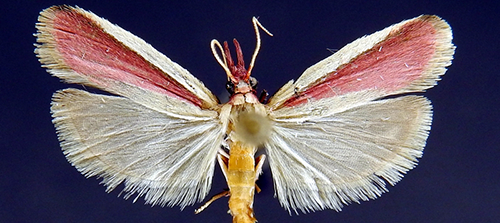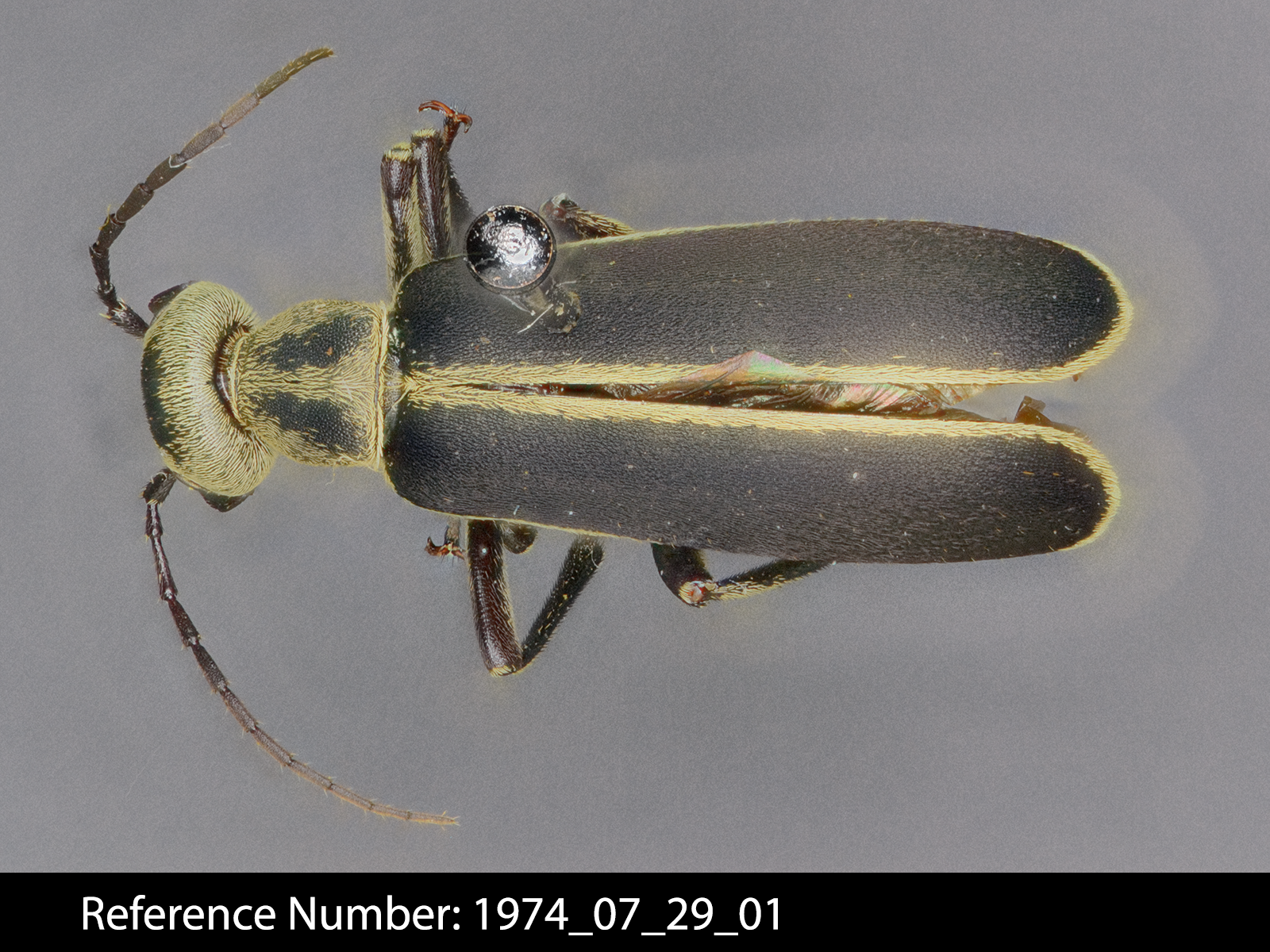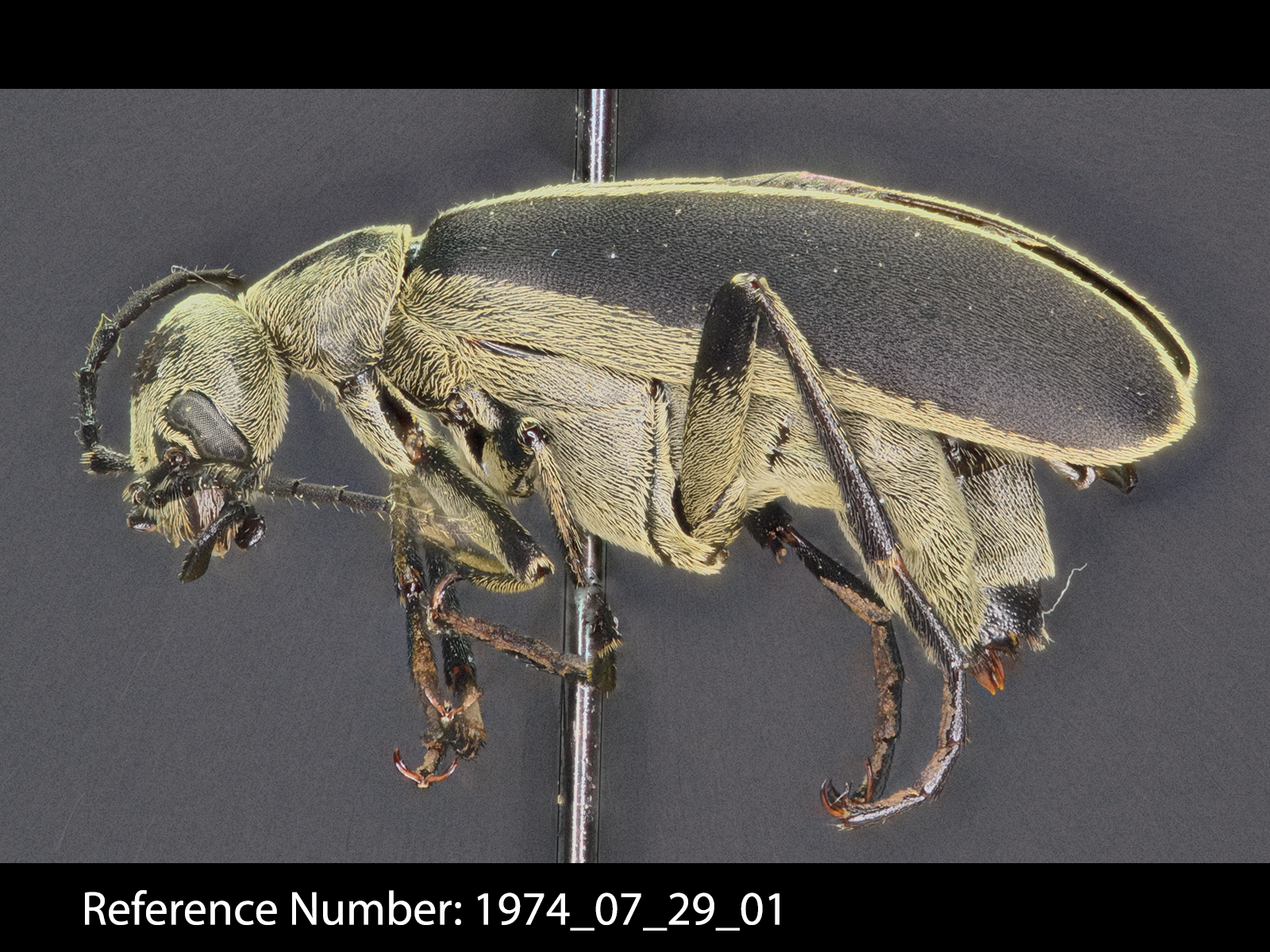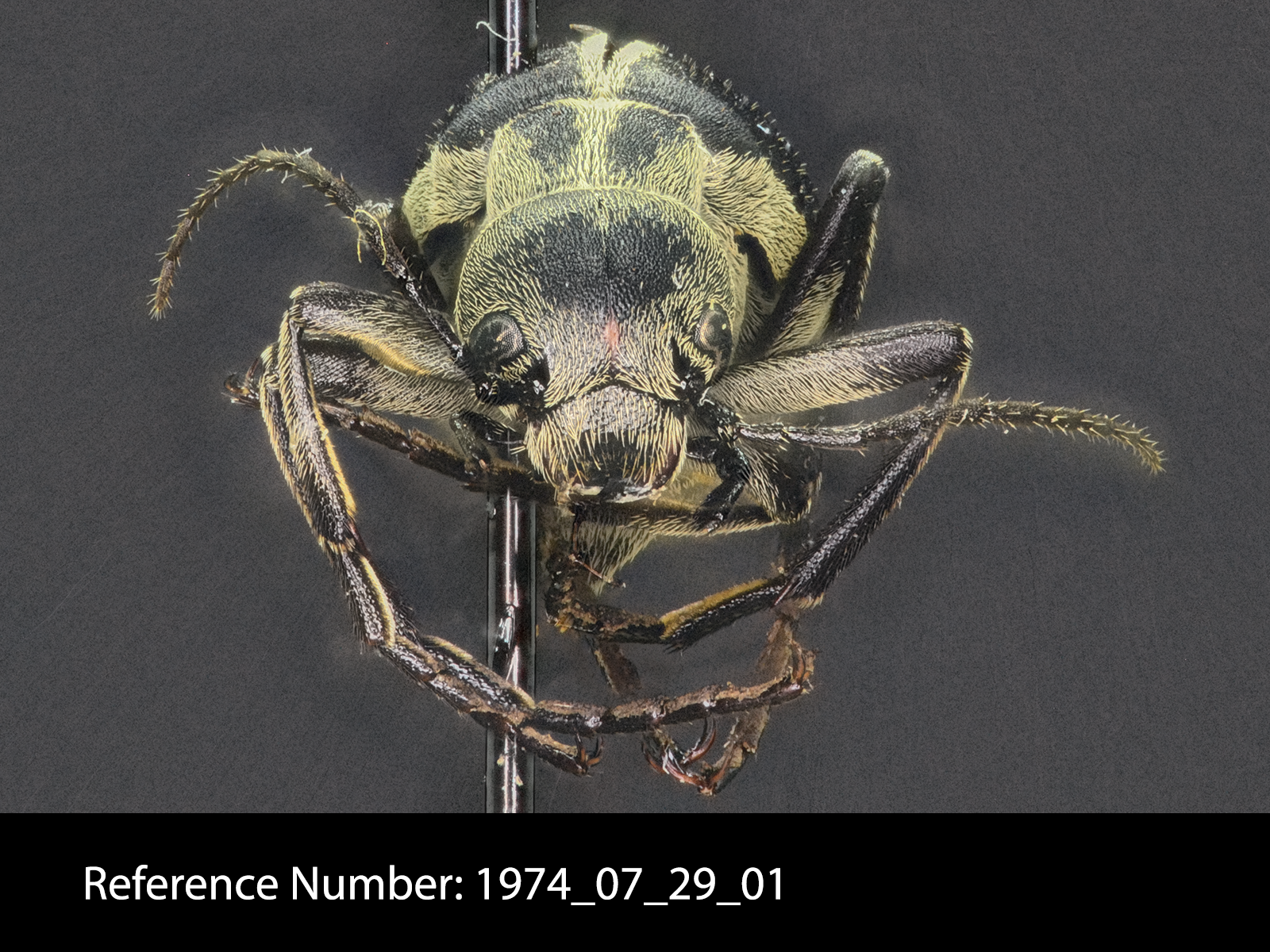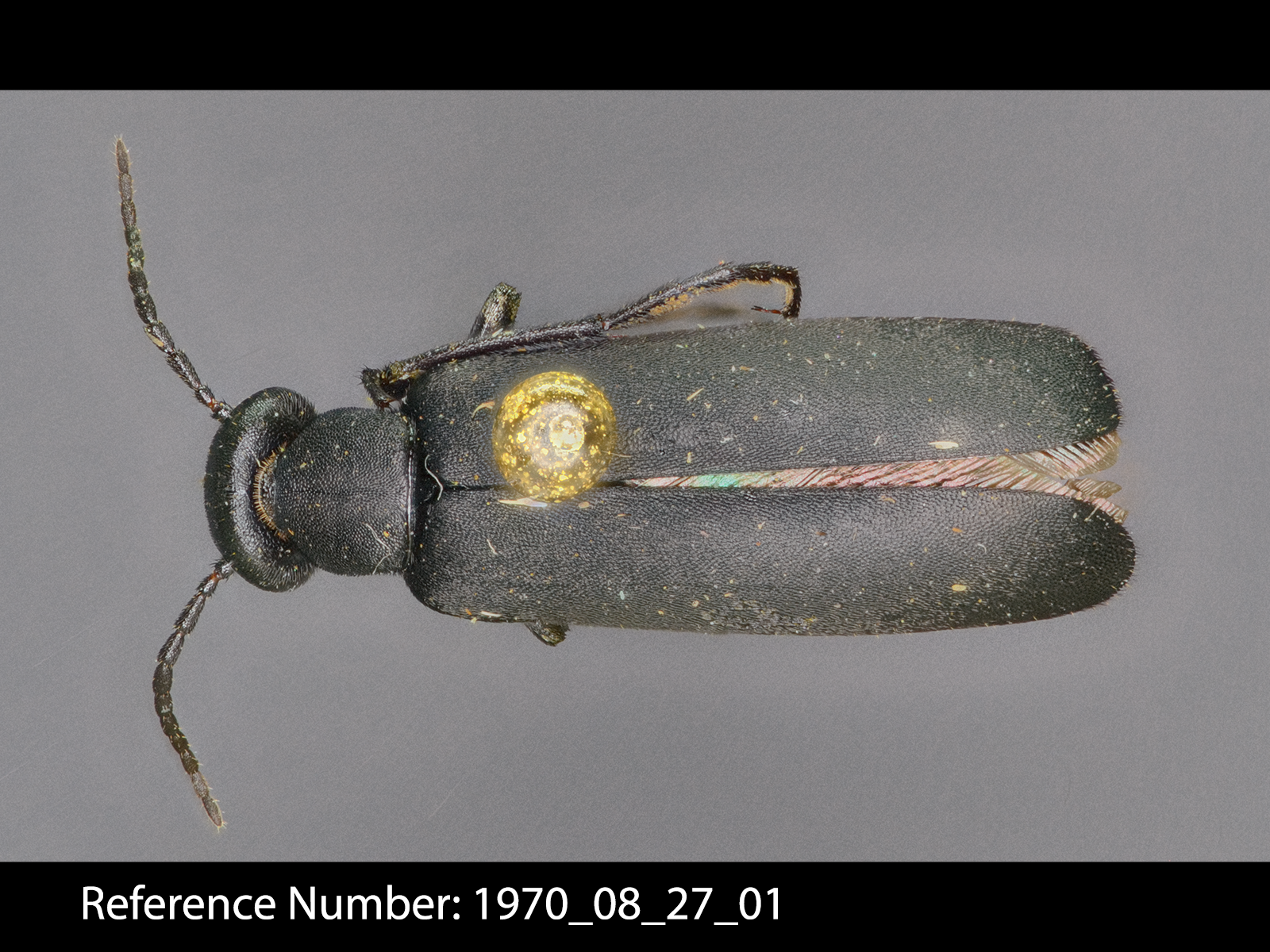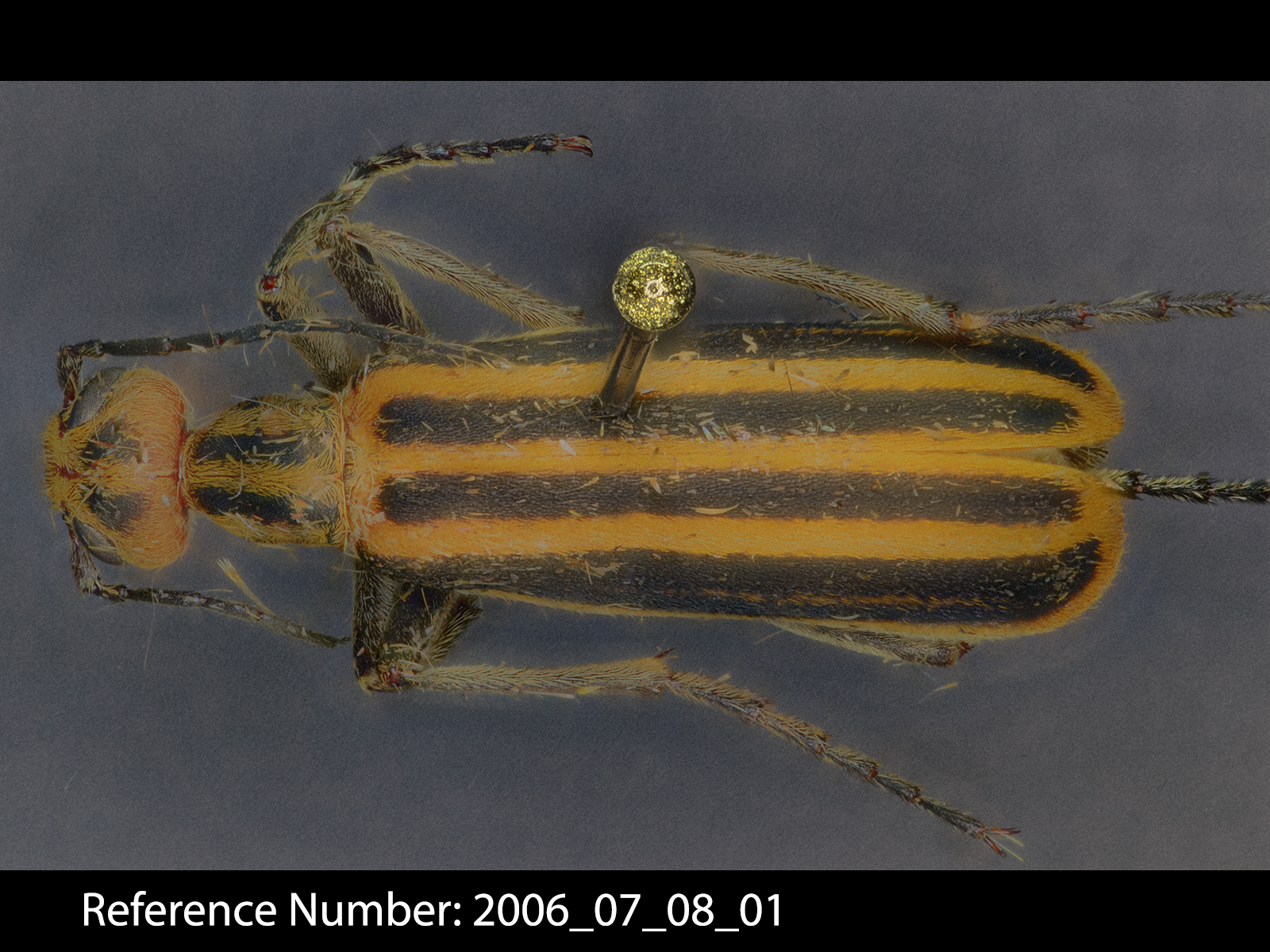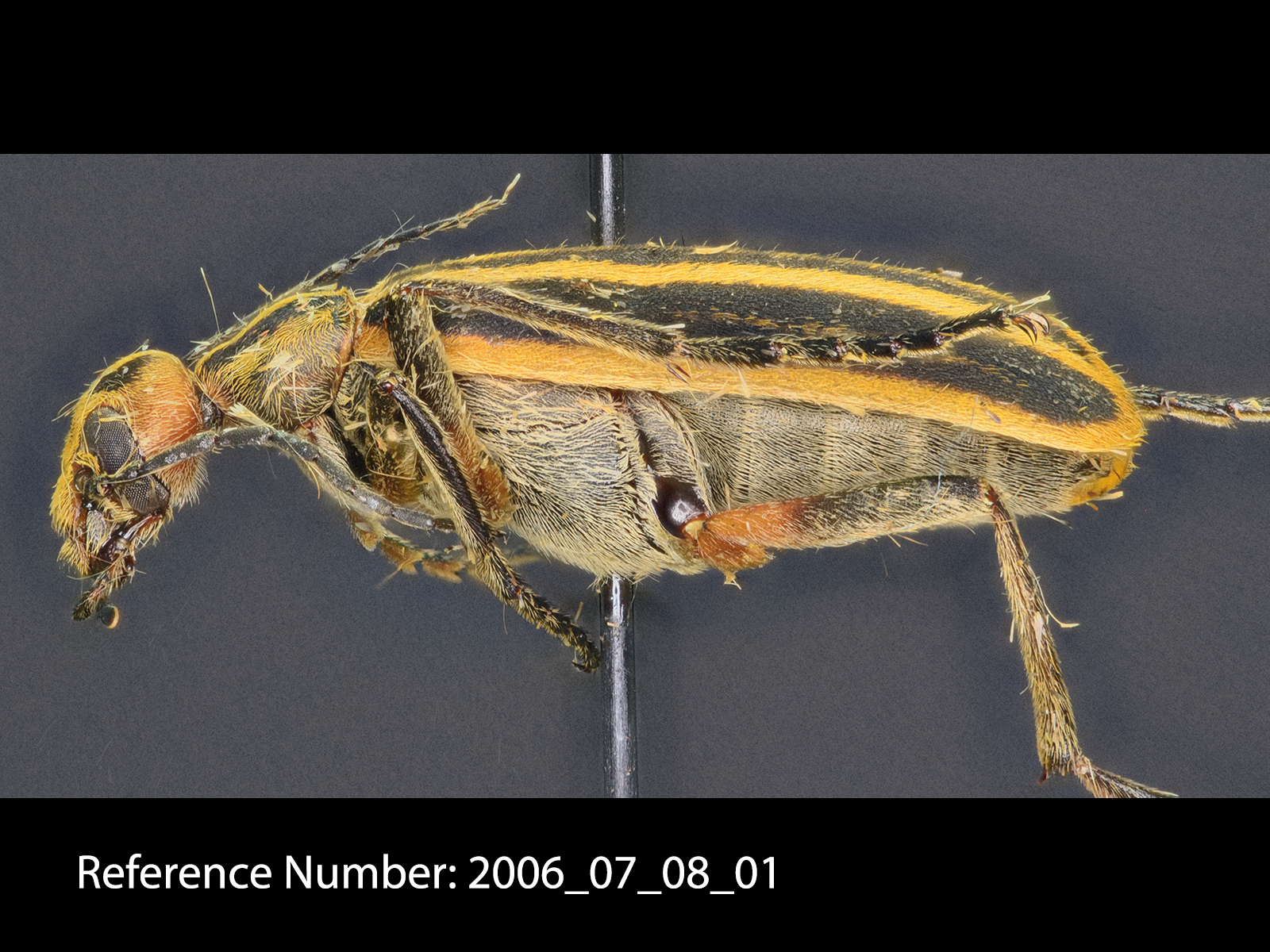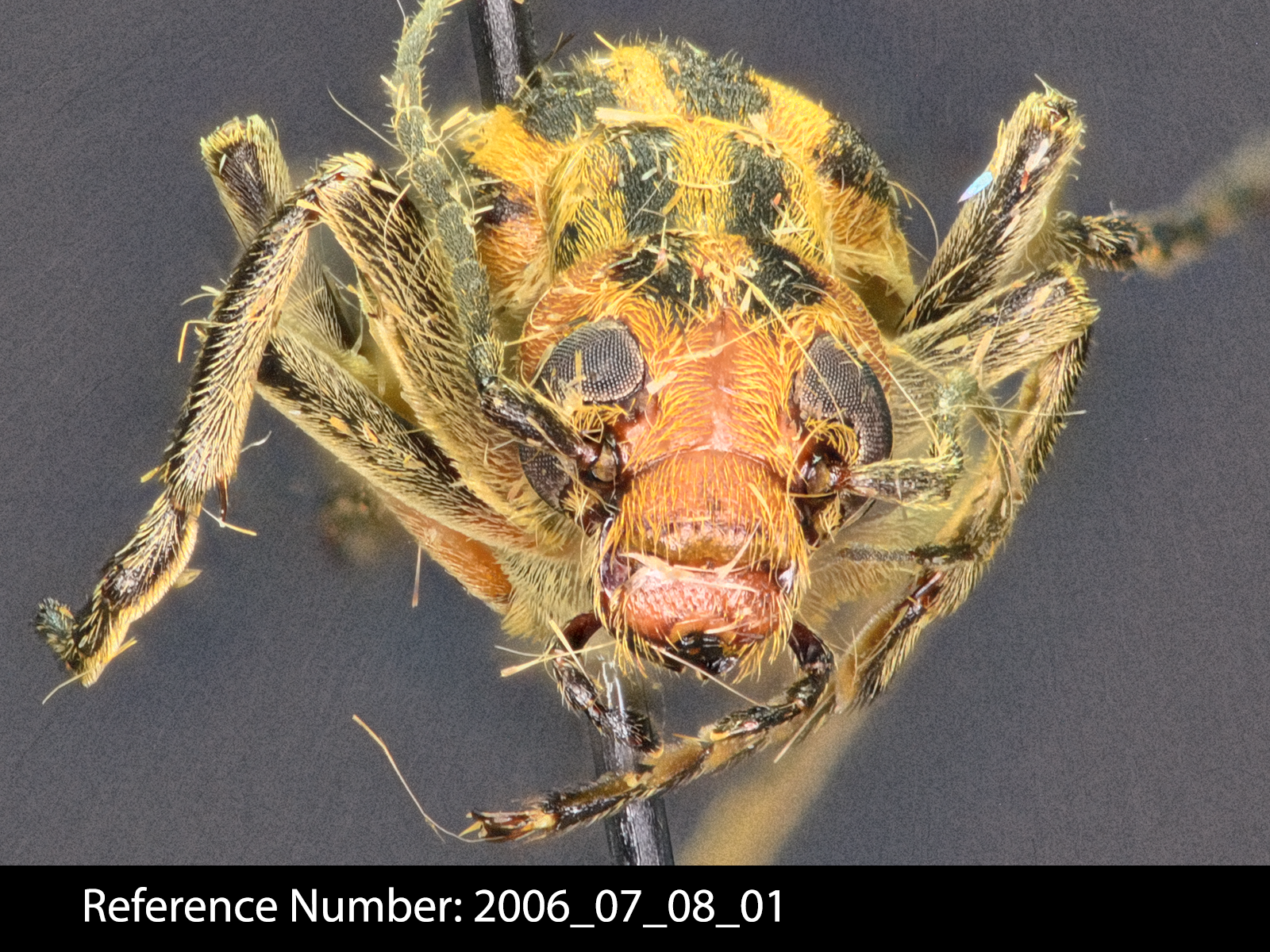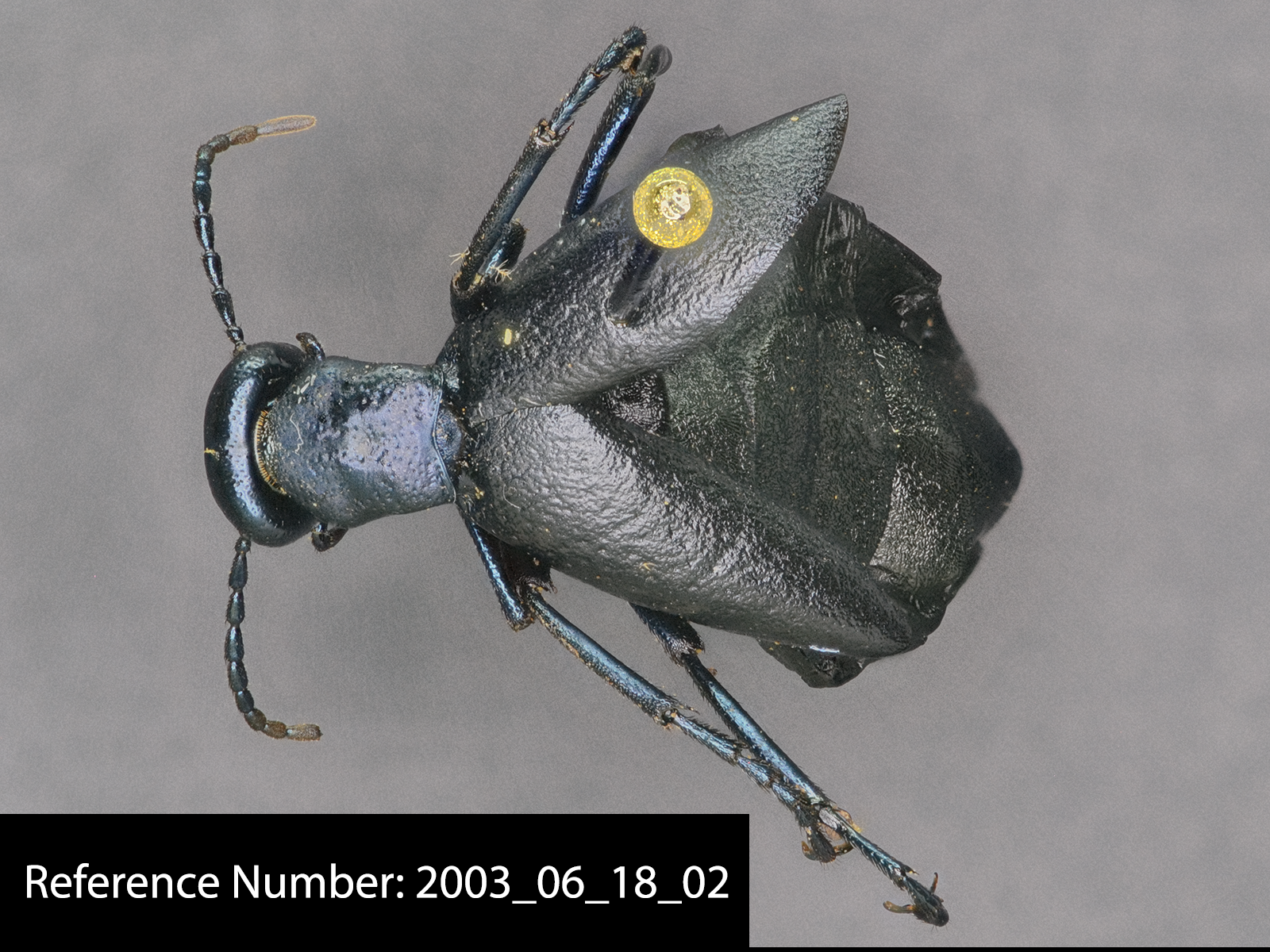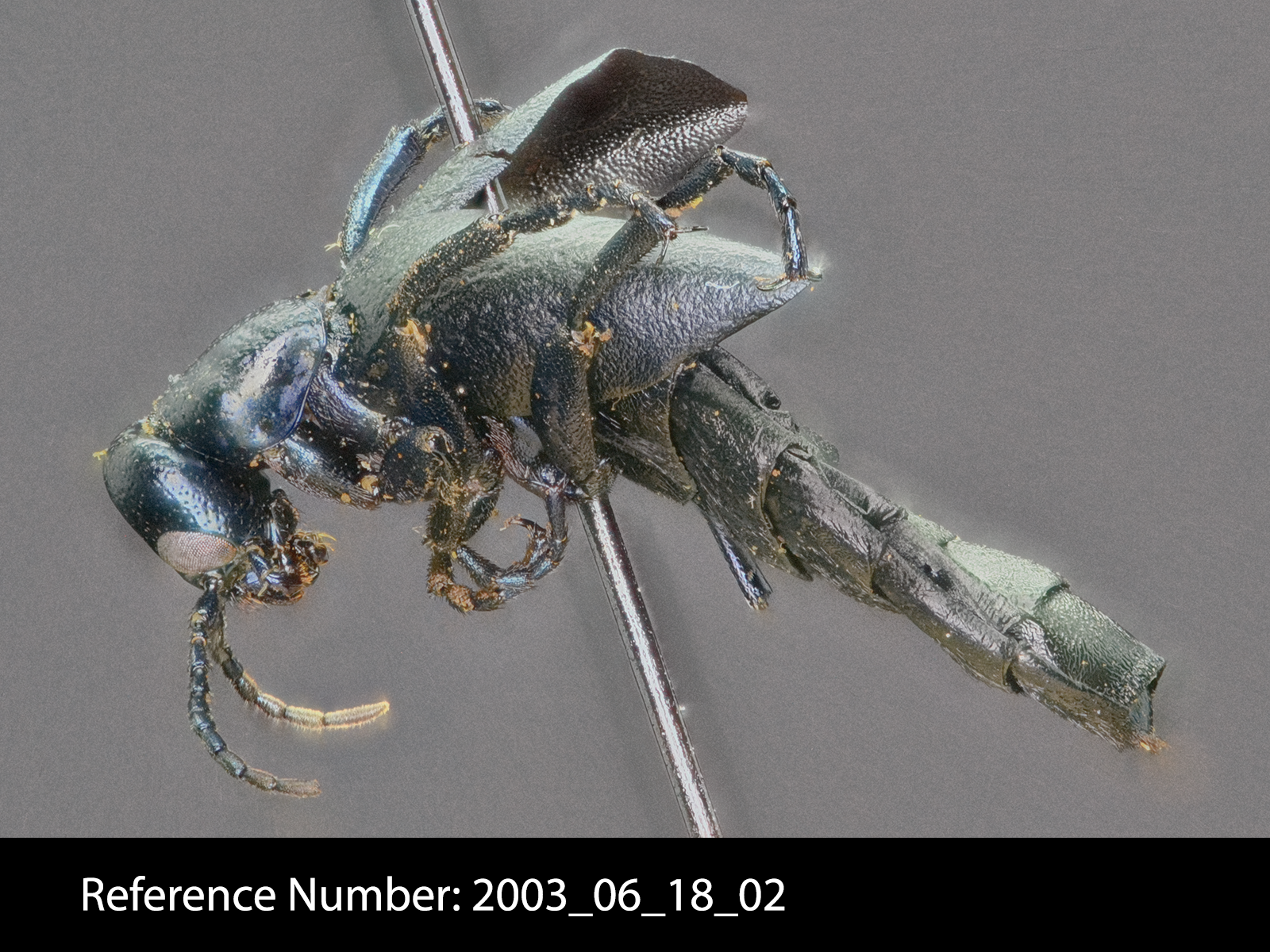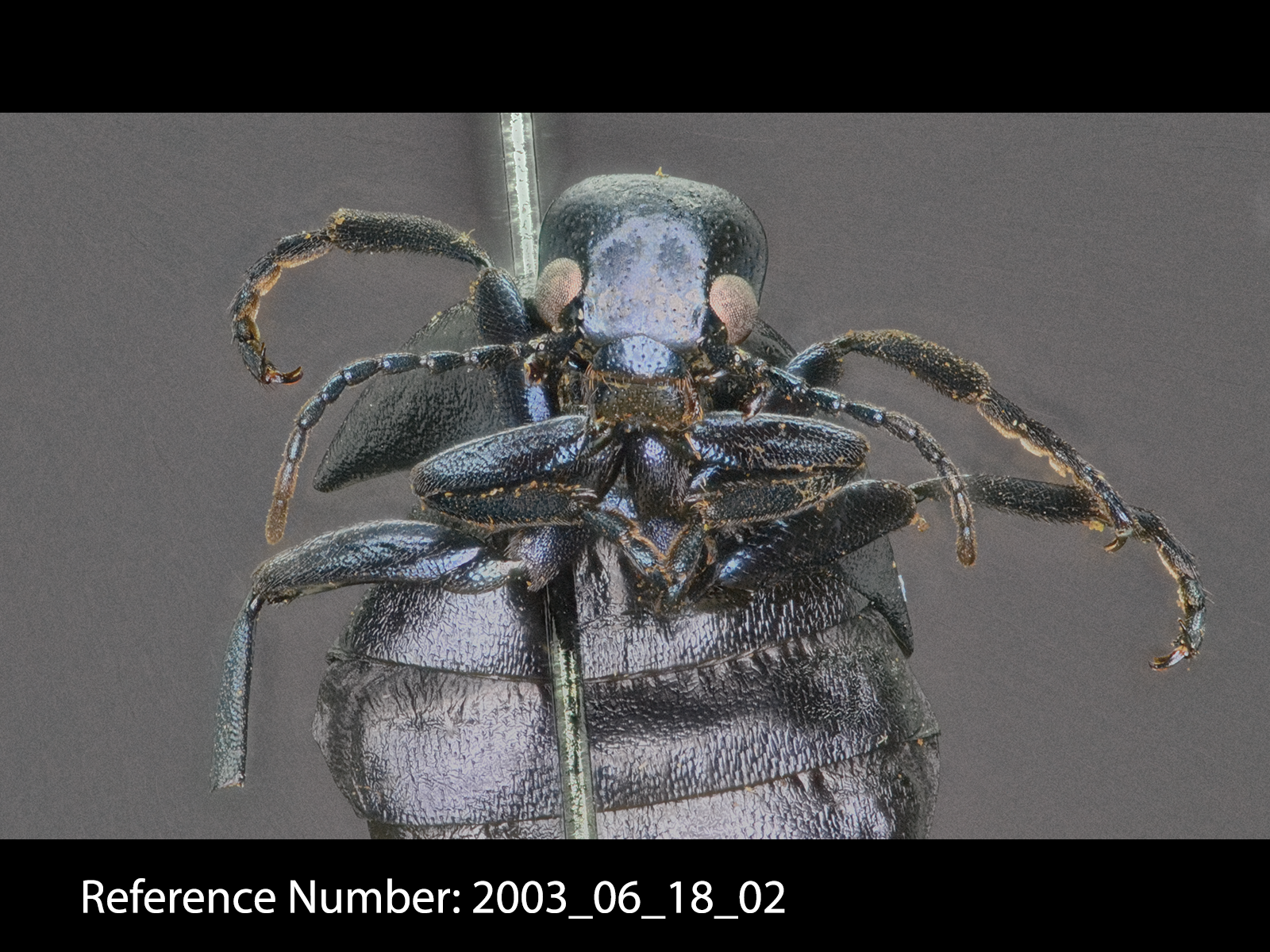COLEOPTERA: Meloidae
Blister beetles defend themselves with a blistering agent called cantharadin. There are over 7,500 species known worldwide; over 400 species are known from North America. Many adults are brightly colored as a warning to potential predators.
Click/ tap on any of the images to view a larger version of the photo. Please respect that all these photos are copyrighted. Do not use them for any purpose without first contacting us (there is a contact form on our main page for this site).
Epicauta funebris Horn, 1873.
This blister beetle is encountered on vegetation in central Illinois. The common name is margined blister beetle. Members of this genus have native species on every continent except Australia and Antarctica. Adults feed on plants; larvae feed on the eggs of grasshoppers. This specimen was collected by Jeri Simmons in Peoria Co., Illinois roughly 50 years ago.
Epicauta pensylvanica (De Geer, 1775).
This blister beetle is encountered on vegetation in central Illinois. Members of this genus have native species on every continent except Australia and Antarctica. Adults feed on plants; larvae feed on the eggs of grasshoppers. This specimen was collected by Mark DuBois in Tazewell Co., Illinois roughly 50 years ago.
Yes, there is only one “n” at the start of this species name. The original spelling of the species was Latinized with a single “n” at the start.
Epicauta vittata Fabricius, 1775.
The common name for this species is striped blister beetle. The first stage of the larvae is quite mobile and seeks out grasshopper eggs to feed upon. Think about that for a moment. The egg has been buried underground. The larva hatches and its first mission is to move to the surface and seek grasshopper eggs (which are also buried in the soil). This larva is roughly the size of the period at the end of this sentence. The adult beetle feeds on plants.This specimen was collected by Mark DuBois in Peoria Co., Illinois.
Meloe impressus Kirby, 1837.
This blister beetle is encountered on vegetation in central Illinois. The common name is oil beetle because it releases droplets of blood (haemolymph) from its joints when disturbed. These droplets contain a blistering agent (cantharadin). Larvae feed on select species of bees. Adults feed on plants. This specimen was collected by Mark DuBois in Marshall Co., Illinois.
